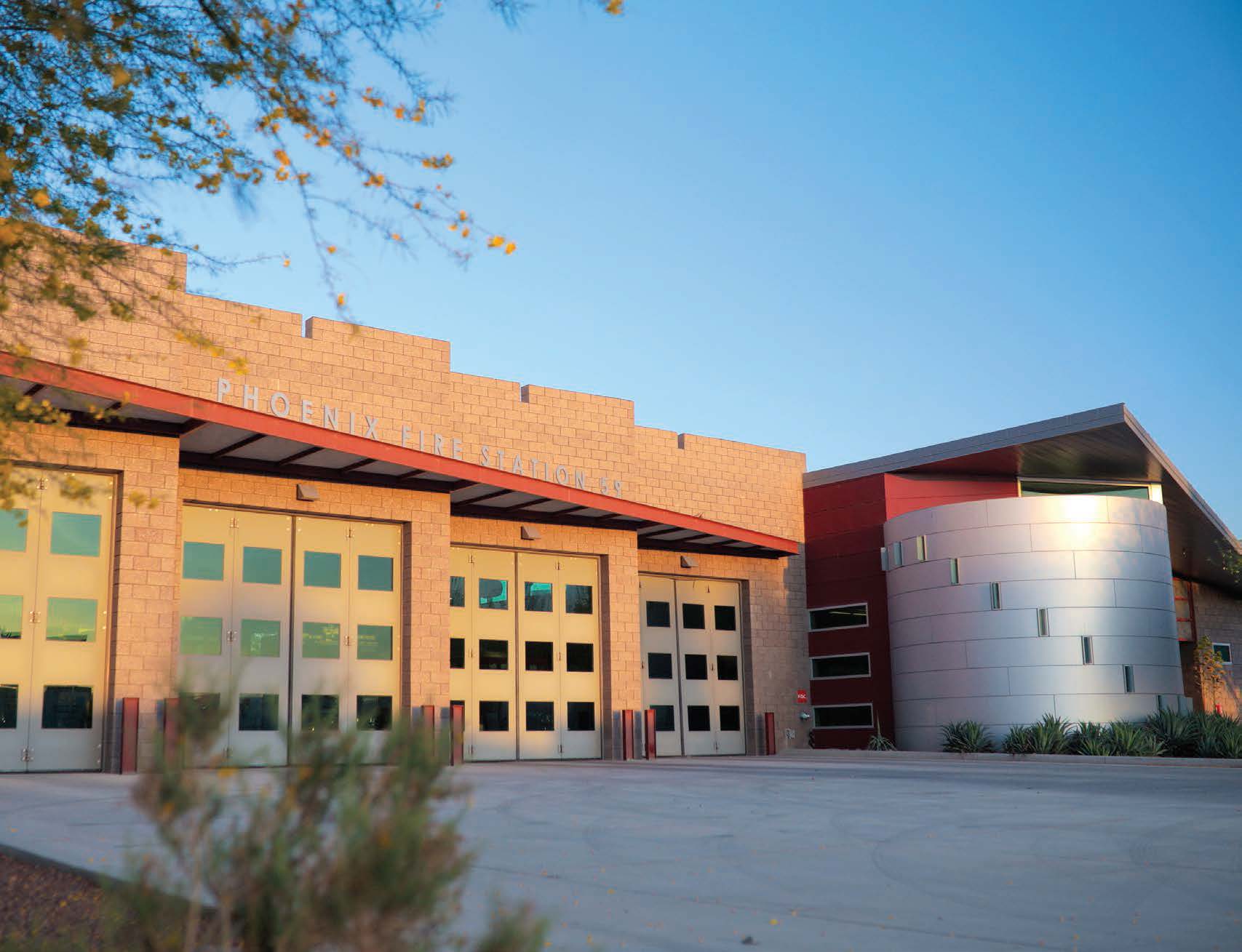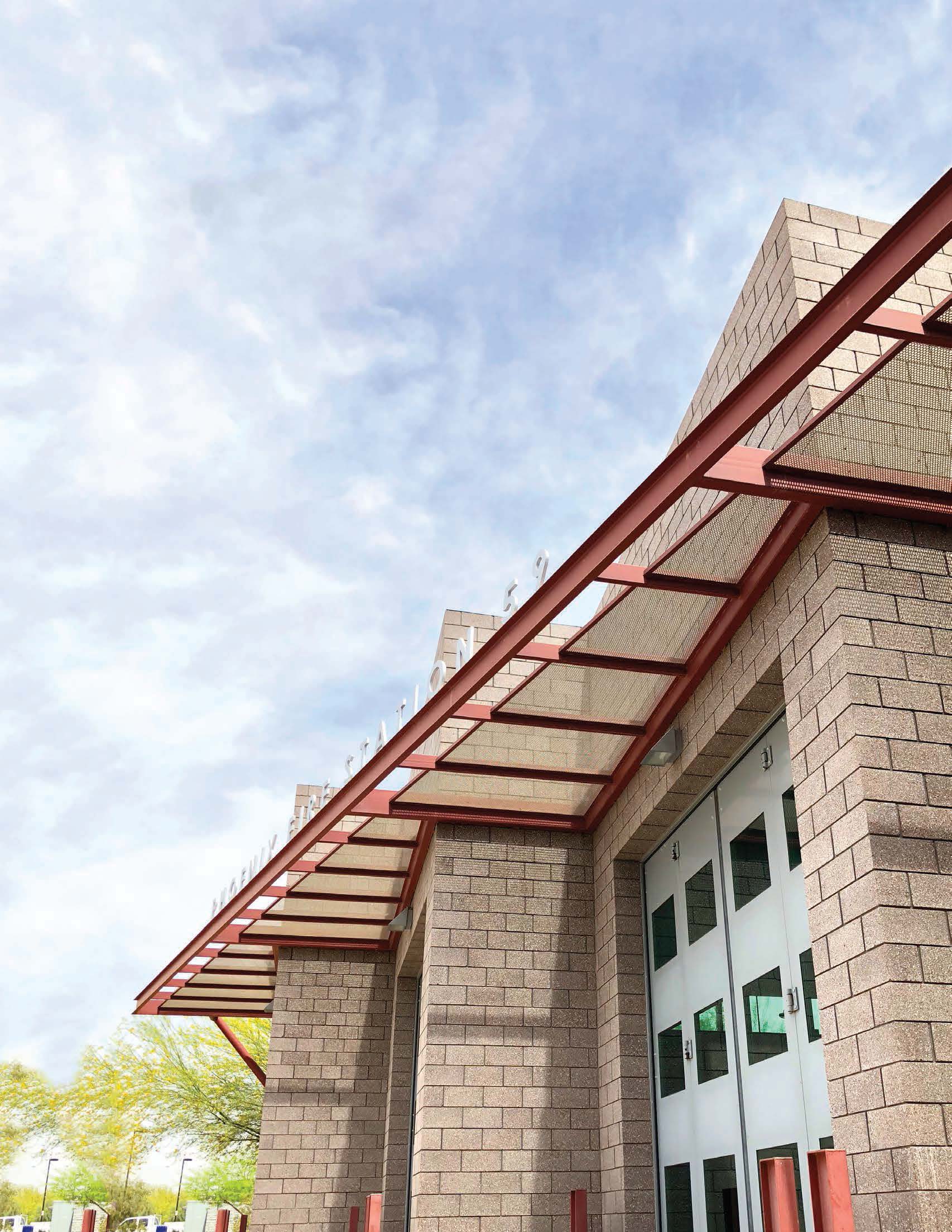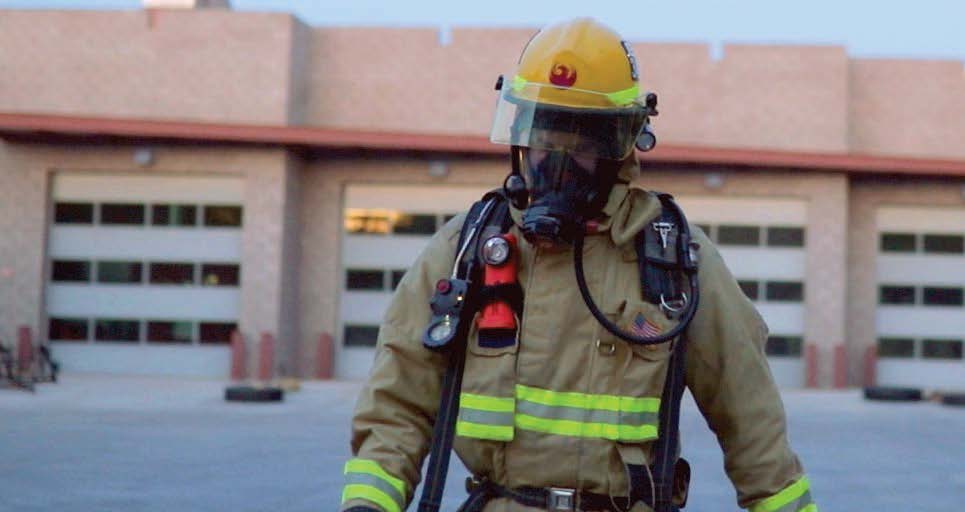Return to News
DESIGN PERSPECTIVE: LEED PLATINUM FIREHOUSE
Lawrence (Larry) Enyart is founding principal and design architect at Lawrence Enyart Architects (LEA), which he owns with his son, Lance Enyart, AIA, LEED AP. Among the firm’s core values is designing for sustainability with numerous LEED Certified projects in their portfolio.

LEED Platinum Firehouse Designed for Safety and Comfort with Concrete Masonry
The Phoenix Fire Department Station 59 was designed to provide rapid response while protecting firefighters and support staff from extreme heat, diesel fumes, biological hazards, and noise. Because the firehouse is both a home away from home and an active industrial garage, acoustics, comfort and separate living areas were all key in designing the firehouse, according to Phoenix-based LEA Architect’s Lawrence Enyart. And, the design team was able to design it beautifully to blend in with the neighborhood.
The primary mission of Phoenix Station 59 is to serve the nearby Freeport Industrial Center, which is home to a very large fuel farm. Built in 2012, the 15,000 sq. ft., four-bay fire station is located about a mile and a half away from the Center. The designers sought to achieve a balance that protected the brave men and women putting their lives on the line. with functional, comfortable living quarters. The way LEA Architects accomplished this — and earned the City its first LEED Platinum building — was through solar photovoltaic (PV) panels, solar hot water, concrete masonry systems, shade canopies, exhaust and ventilation systems. With average daily summer temperatures of 110–115 degrees F, masonry was an important factor in keeping the building cool.
“We chose masonry on the interior for its thermal mass properties. When the material gets cold, it tends to stay cold, reducing the strain on the air conditioning system.” – Lawrence Enyart

LEA Architects used masonry to achieve the delicate balance of protective fire-resistance and strength with comfort, energy, acoustics for Firehouse 59 personnel who needed to live and work in one space.
The Echelon Integra® System was used structurally throughout the building. Echelon’s Trenwyth Trendstone ground face concrete masonry units (CMUs), which features a terra cotta flash, complemented the desert landscape. The Integra System was chosen because it offers the benefits of a conventional masonry wall system, while at the same time providing superior thermal performance properties. For optimum thermal performance, a proprietary polyurethane, specifically blended for use in the Integra® Wall System, was also used.
“By adding insulation in the walls, we earned more LEED credits, too. It’s a very well-insulated building,” says Enyart. He noted they also received LEED Regional Material credits because the masonry was produced only two miles away from the job site.
“We also chose the Integra wall system to contribute to the safety of the station as a non-combustible building; noise mitigation was also a value-added component of the masonry systems we selected.” adds Enyart.
The combination of the non-flammable concrete and metal surfaces in Phoenix Station 59 create an environment safe from fire and biological contaminants. The low-maintenance, convenience and design aesthetic make the Firehouse 59 a more welcoming place to spend long days and nights.
CONSIDER INDOOR AIR QUALITY
It’s important to consider what a building material will — or will not — contribute to indoor air quality for years to come. As a time-tested natural material, masonry emits fewer volatile organic compounds (VOCs) than many other building materials. It’s an odor-free material that often doesn’t need paint or coating, also contributing to low-VOC environments. And, complete masonry systems (such as Echelon’s InsulTech System) combine structures that more easily transport water vapor to minimize mold and mildew.

This article first appeared in Modern Masonry Volume 3 Issue 1. Read the full issue here.
Return to News
Stay Connected
Get the latest news and information from Echelon by signing up to receive our monthly newsletter.